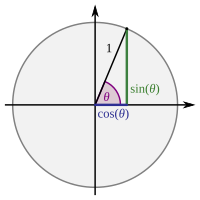Inverse trigonometric functions

Inverse trigonometric functions are like a secret code that tells you what angle you need to make in order to get a certain number.
Let's say you have a right triangle, and you want to figure out what angle you need to make in order to get a certain ratio of sides. The regular trigonometric functions (sine, cosine, tangent) can help you do that - you just plug in the ratio you know and get the angle you need.
But what if you know the ratio, and you want to find the angle, but you don't know which trigonometric function to use? That's where the inverse trigonometric functions come in.
Each regular trigonometric function has an "inverse" function that basically does the opposite. So if "sine" tells you what angle you need to get a certain ratio of sides, "arcsine" tells you what ratio of sides you need to get a certain angle.
The catch is that this "arcsine" function only works for certain ratios of sides - namely, ratios that will give you an angle between -90 degrees and 90 degrees.
So if you want to find an angle that's outside that range (like 120 degrees), you'll have to use a different inverse trigonometric function (like "arctangent" or "arccosine").
But no matter which function you use, the basic idea is the same: you plug in the ratio or angle you know, and the inverse function gives you the missing piece of the puzzle. It's like a magic spell that helps you unlock the secrets of triangles!
Let's say you have a right triangle, and you want to figure out what angle you need to make in order to get a certain ratio of sides. The regular trigonometric functions (sine, cosine, tangent) can help you do that - you just plug in the ratio you know and get the angle you need.
But what if you know the ratio, and you want to find the angle, but you don't know which trigonometric function to use? That's where the inverse trigonometric functions come in.
Each regular trigonometric function has an "inverse" function that basically does the opposite. So if "sine" tells you what angle you need to get a certain ratio of sides, "arcsine" tells you what ratio of sides you need to get a certain angle.
The catch is that this "arcsine" function only works for certain ratios of sides - namely, ratios that will give you an angle between -90 degrees and 90 degrees.
So if you want to find an angle that's outside that range (like 120 degrees), you'll have to use a different inverse trigonometric function (like "arctangent" or "arccosine").
But no matter which function you use, the basic idea is the same: you plug in the ratio or angle you know, and the inverse function gives you the missing piece of the puzzle. It's like a magic spell that helps you unlock the secrets of triangles!
Related topics others have asked about:
